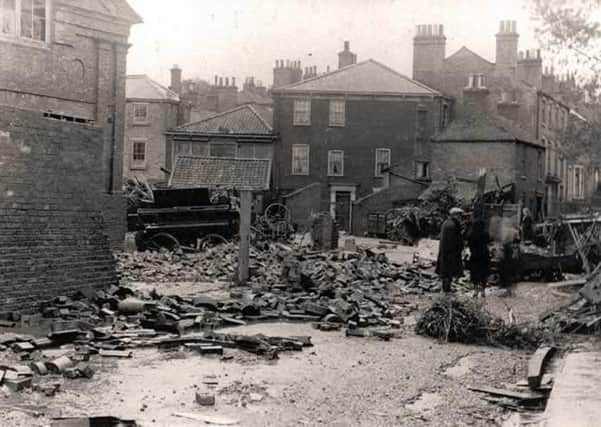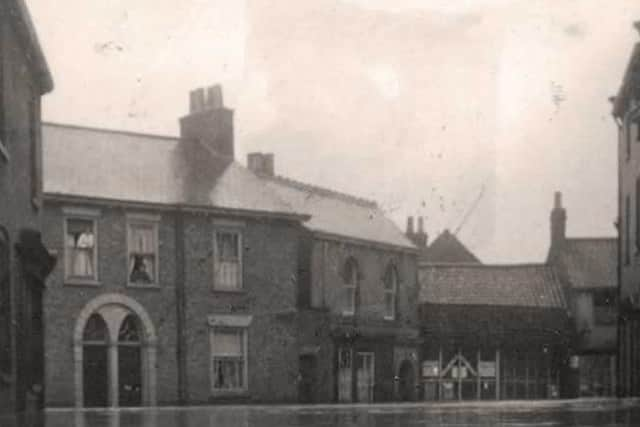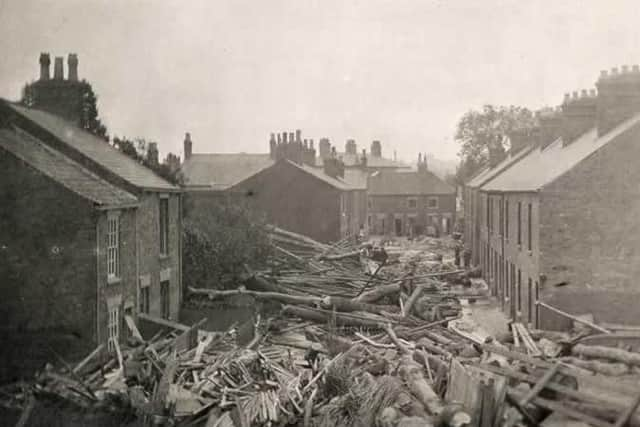Video: Remembering the Louth Flood, one hundred years on


On that fateful day, the people of Louth went about their business as usual, unaware that two massive moisture-laden weather systems were converging in the skies above the Wolds to the west of town.
As a result, immense storm clouds were forming. Within the space of just a few hours, the River Lud - previously thought of as little more than a benign trickle meandering through town - would be transformed into a potential killer, soon taking 23 lives.
Advertisement
Advertisement
Shortly before 2pm, out in the Wolds, the rain began to fall, accompanied by rolls of thunder and flashes of lightning. It was soon torrential and caused motor vehicles to halt due to poor visibility.
Later, on the Louth to Lincoln line, the 3pm train was also forced to stop near Withcall as water and soil washed off the hills covered the tracks and rose to the height of the footboards.
By the same time in Louth, the skies had darkened enough that gas lights in shops had to be lit, although no rain fell here until 4.30pm. But by then over four-and-a-half inches had fallen within the 22 square mile catchment area of the Lud in less than three hours. This was more than 15 per cent of the average annual rainfall, calculated at 12 million tons of water.
Huge gullies were gouged into many roads. Crops and livestock were washed off hillsides, fences and trees were uprooted, and bridges and outlying farm buildings were swept away. All were carried relentlessly towards Louth.
Advertisement
Advertisement
At Westgate Bridge, debris caused a partial blockage, creating a vast lake 200 feet wide in Westgate Fields.


At 5pm, a slightly smaller lake, behind a debris dam a little further to the west, suddenly broke through.
This extra weight proved too much for the bridge to hold, and the resulting wall of water and detritus - some 14 feet high - rolled relentlessly like a tsunami towards town.
The damage to bricks and mortar was colossal. The water alone would have been destructive but, loaded as it was with lethal items including whole tree trunks from the Wellington Street wood yard, nothing and nobody in its path stood a chance.
Advertisement
Advertisement
There were great feats of heroism that day, with many people saved from otherwise certain death. There was tragic loss – probably the most poignant being the Berry family of Broadbank, where three of their five young children drowned.


But there was also new life – Charles and Annie Kirman’s daughter (later christened Frances Luda) arrived in the midst of the maelstrom. She was born deaf and dumb but became a hairdresser and lived long enough to be able to see Louth Museum’s detailed and fascinating Flood Display - which is sadly closed at the moment due to the ongoing coronavirus pandemic.
The flood received both national and international press coverage, thanks to the presence of reporters and cameramen in Louth for the forthcoming parliamentary by-election. In three days, the Daily Mail had collected £18,000 (£800,000 in today’s money) for the replacement of furniture and clothing. Other offers of aid came from as far afield as Greece.
Twenty three people tragically lost their lives that day, including six children.
Advertisement
Advertisement
In next week’s paper, we will take a look at some of the people who sadly died - and some who miraculously survived - on that fateful day.
• Our special thanks goes to Geoff Hill, Louth Museum, and Louth Town Council for additional details and photos.